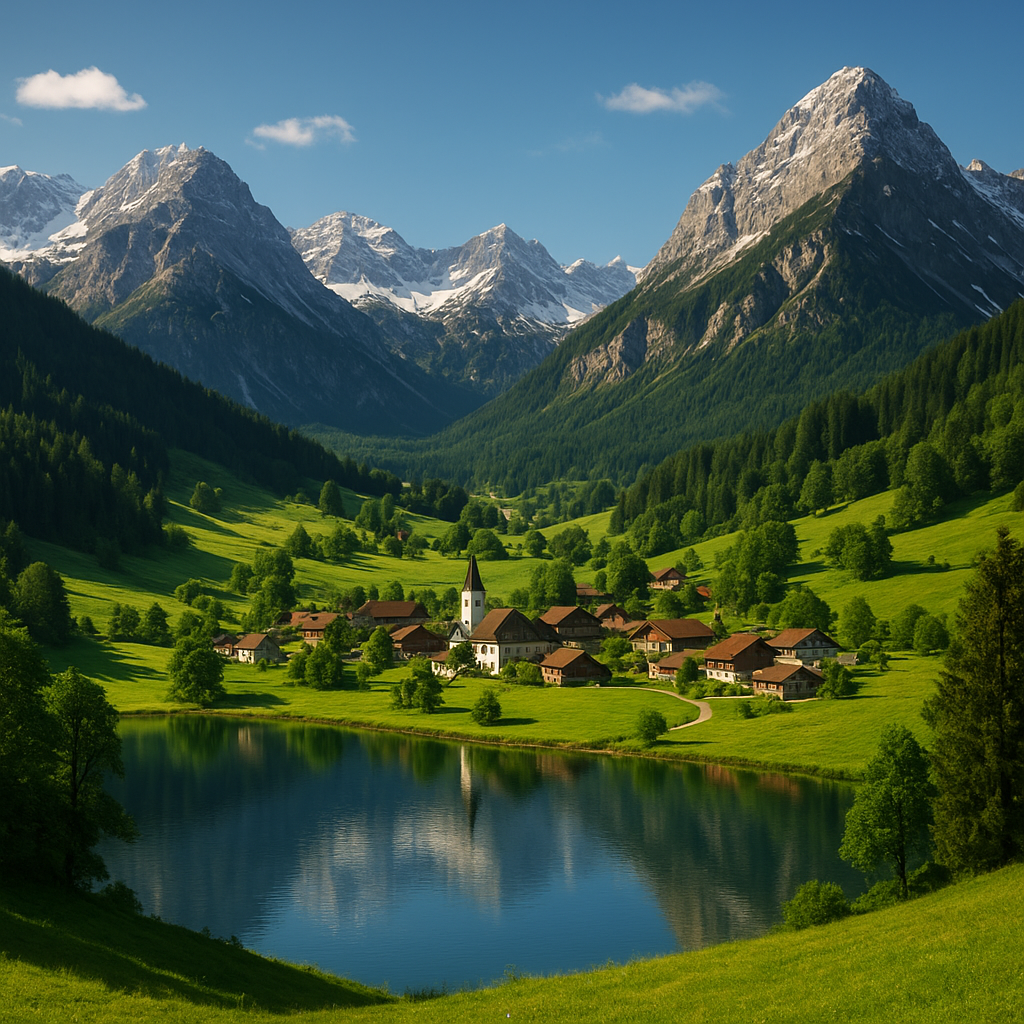
In the heart of the majestic Alps, where nature’s beauty is unparalleled, the concept of sustainable alpine beauty has gained significant traction. This article delves into the role of science and innovation in promoting and preserving the pristine allure of alpine regions, ensuring that their natural splendor can be enjoyed by future generations.
The Intersection of Science and Alpine Beauty
The Alps, with their breathtaking landscapes and diverse ecosystems, have long been a source of inspiration and wonder. However, the increasing impact of climate change and human activities poses a significant threat to these fragile environments. This is where science and innovation come into play, offering solutions to mitigate these effects and promote sustainable practices.
Scientific research in the Alps focuses on understanding the intricate balance of these ecosystems. By studying the flora and fauna, as well as the geological and climatic conditions, scientists can develop strategies to protect and preserve these natural habitats. For instance, the study of alpine plants and their unique adaptations to harsh conditions has led to the development of sustainable agricultural practices that can be applied in other regions.
Moreover, innovation in technology has paved the way for more efficient and eco-friendly tourism practices. The use of renewable energy sources, such as solar and wind power, in alpine resorts and lodges reduces the carbon footprint and helps maintain the natural beauty of the region. Additionally, advancements in waste management and water conservation technologies ensure that the impact of human activities on the environment is minimized.
Innovative Approaches to Sustainable Tourism
Tourism is a major economic driver in the Alps, attracting millions of visitors each year. However, the influx of tourists can put a strain on the environment, leading to issues such as habitat destruction, pollution, and resource depletion. To address these challenges, innovative approaches to sustainable tourism are being implemented.
One such approach is the promotion of eco-tourism, which emphasizes responsible travel practices that minimize environmental impact. Eco-tourism initiatives in the Alps include guided tours that educate visitors about the local ecosystems and the importance of conservation. These tours often involve activities such as wildlife observation, hiking, and nature photography, allowing tourists to experience the beauty of the Alps while fostering a deeper appreciation for the environment.
Another innovative strategy is the development of sustainable infrastructure. Alpine resorts and lodges are increasingly incorporating green building practices, such as the use of locally sourced materials, energy-efficient designs, and sustainable landscaping. These measures not only reduce the environmental impact of construction but also enhance the overall aesthetic appeal of the region.
Furthermore, the integration of digital technologies in tourism management has revolutionized the way visitors interact with the alpine environment. Mobile apps and online platforms provide real-time information on weather conditions, trail statuses, and wildlife sightings, enabling tourists to plan their activities more effectively and safely. These technologies also facilitate the monitoring of visitor numbers and behaviors, helping to prevent overcrowding and overuse of popular sites.
Community Involvement and Education
The success of sustainable alpine beauty initiatives relies heavily on the involvement and education of local communities. Residents of alpine regions play a crucial role in preserving their natural heritage, and their participation in conservation efforts is essential.
Community-based conservation programs empower local residents to take an active role in protecting their environment. These programs often involve training and capacity-building activities, such as workshops on sustainable farming practices, wildlife monitoring, and eco-friendly tourism. By equipping communities with the knowledge and skills needed to manage their natural resources sustainably, these initiatives foster a sense of ownership and responsibility.
Education is another key component of promoting sustainable alpine beauty. Schools and educational institutions in alpine regions are incorporating environmental education into their curricula, teaching students about the importance of conservation and sustainable practices. Field trips and hands-on learning experiences, such as tree planting and habitat restoration projects, provide students with practical knowledge and foster a lifelong commitment to environmental stewardship.
The Future of Sustainable Alpine Beauty
As the challenges facing the Alps continue to evolve, so too must the strategies for preserving their beauty. The future of sustainable alpine beauty lies in the continued integration of science, innovation, and community involvement. By leveraging cutting-edge research and technology, promoting responsible tourism practices, and empowering local communities, we can ensure that the Alps remain a source of inspiration and wonder for generations to come.
In conclusion, the role of science and innovation in sustainable alpine beauty cannot be overstated. From understanding the complexities of alpine ecosystems to developing eco-friendly tourism practices and engaging local communities, these efforts are crucial in preserving the natural splendor of the Alps. As we move forward, it is imperative that we continue to prioritize sustainability and conservation, ensuring that the beauty of the Alps endures for future generations to enjoy.

